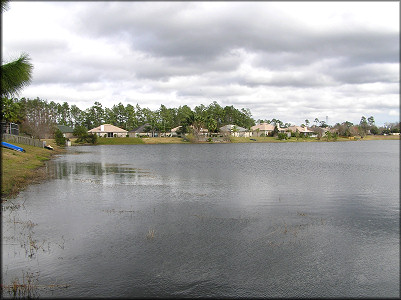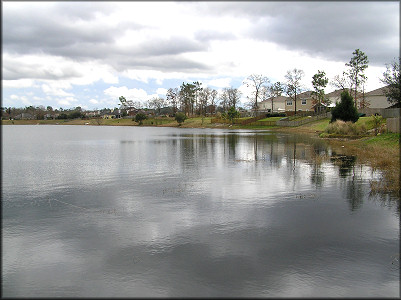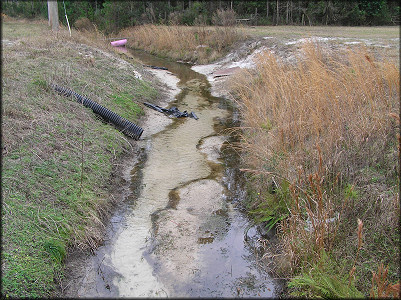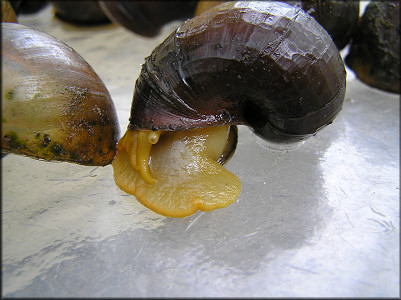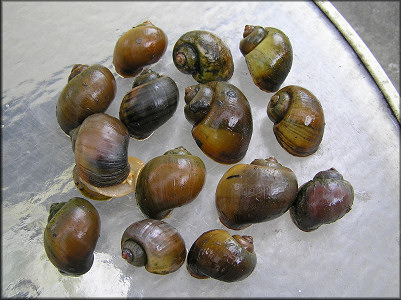|
Pomacea canaliculata (Lamarck, 1822) At Hatton Chase Subdivision Lake |
|
|
Acting on information
provided by Larry Connor, Florida Fish and Wildlife Conservation
Commission,
on January 30, 2006 this reporter visited a lake/retention pond in the
Hatton Chase Subdivision off Old St. Augustine Road (just west of Bayard) in
southeastern Duval County, where in September of 2005, that agency had
received information indicating the presence of Channeled Applesnails. Immediately upon my arrival it was obvious that the impoundment was literally over-run with Pomacea as was evidenced by the large number of both live and dead specimens as well as the profusion of egg clutches. During a circumnavigation of the lake, countless numbers of live specimens were seen near the shoreline ranging in size from tiny juveniles to adults, and egg clusters were present in equally prodigious numbers. Despite the winter weather and cold water temperatures, the snails were extremely active and about half of the specimens seen were actively copulating. During the circumnavigation it was determined that the lake had a single outflow where the local homeowners association had installed a concrete "Grass Carp Trap" in support of their stocking of that species in the lake for aquatic weed control (an unnecessary action it would now appear). This structure may have been effective against carp with a desire for greener pastures but proved totally ineffective in regards to the marauding Pomacea and just provided them additional substrate on which to deposit their egg clutches. The outflow, consisting of a single large concrete pipe, was subsequently determined to empty into a nearby small creek after running totally underground for about 115 yards. The small creek was found to have an equally impressive Pomacea population (both dead and alive) as well as numerous egg clutches. Further exploration confirmed that the Pomacea had colonized the creek downstream for a distance of at least 367 yards. No Pomacea, either dead or alive, was found upstream. The full extent of how far the Pomacea had spread could not be easily determined because of heavy vegetation. For whatever reason the Pomacea population in both the lake and in the small creek below the lake outflow began a gradual decline and by 2008 had totally disappeared. This reporter continued to monitor the lake/ditch on a periodic basis and no evidence of living Pomacea was seen over the years. However, during one such monitoring sortie on 7/2/2012 three fresh Pomacea egg clutches and one juvenile living specimen were found on structure on the west bank of the lake. No evidence of Pomacea was seen on the east bank of the lake or the drainage ditch below the lake outflow. Whether the recent find represents a new introduction of Pomacea into the lake or a resurgence of survivors from the earlier population is unknown. In any case, the population appears to be quite small as of July, 2012. |
|
|
|
|
|
Pomacea Canaliculata On Hatton Chase Lake Shoreline (5/26/2006) |
|
|
|
|
|
Lake west bank looking to the east |
Lake west bank looking to the northeast |
|
|
|
|
Lake west bank looking to the southeast |
"Grass Carp Trap" at lake outflow with Pomacea eggs |


